Books by Janet M Fulton

Educating for Creativity within Higher Education: Integration of Research into Media Practice
This book provides innovative insights into how creativity can be taught within higher education.... more This book provides innovative insights into how creativity can be taught within higher education. Preparing students for employment in a dynamic set of global creative industries requires those students to not only be resilient and entrepreneurial, but also to be locally focused while being globally aware. Therefore it is imperative that they acquire a thorough understanding of creative processes and practice as they try to keep pace with worldwide digital trends. As the creation of media messages is a fundamental aspect of global creative industries, and that numerous concerns practitioners face are based upon a certain understanding of creativity, the authors propose an exploration of what creativity is in terms of research, and then apply it pedagogically. Drawing on extensive empirical research, the authors pose the thought-provoking question of whether creativity can be taught. This volume will be of interest to both students and scholars of creativity and higher education as well as to creatively-based practitioners more widely.

Creating Space in the Fifth Estate
Creating Space in the Fifth Estate explores what is new and valued about the digital media enviro... more Creating Space in the Fifth Estate explores what is new and valued about the digital media environment. The deep and far-reaching changes that are being wrought by the digital revolution are as radical in their effect as the impact of the industrial revolution was in the nineteenth century. While the long-term significance of these changes is uncertain, the nature of the power of differing forms of media offers interesting possibilities for research, as does the potential for a new mainstream space that shares characteristics with older loci of power. This space is not, as this book suggests, merely a space for journalistic endeavors, as shown by contributions here examining a diverse range of communication practices and forms including blogs, journalism, social media, digital literary magazines, disruptive twitter campaigns, and online music production.
The book asks a number of questions. What exactly is the fifth estate? What are the power structures that exist there? What is the relationship between the fourth and fifth estates? What do we lose and what do we gain in that transition? How does the fifth estate change various forms of communication? How does the fifth estate constitute new communities and social movements? What about traditional forms that are still finding their niche in the new world? What actions do we as communicators and communication scholars now need to engage with? Why is it important?
Creating Space in the Fifth Estate is accessible to scholars and students in a range of academic disciplines, including communication and media studies, sociology, cultural studies, and the arts. It will also appeal to those who work in the media and communication industries.

The Creative System in Action: Understanding Cultural Production and Practice
The first of its kind, this book is an overview of systems based research into creativity. It foc... more The first of its kind, this book is an overview of systems based research into creativity. It focuses on empirical studies into creativity that use the systems approach. Uniquely, the authors in this edited collection incorporate not just individual creators but also the social and cultural contexts in which they work and in doing so account for the creative system in action. Looking past Romantic approaches the authors explore a rational explanation of creativity across a range of fields including music, journalism, fiction and non-fiction writing, film, theatre, the arts and design, and digital media. Showcasing innovative research into the creative system in action across various forms of cultural production, the book will attract readers from cultural studies, sociology, psychology, communication and media studies, and the arts. Undergraduate students taking courses related to creative practice or creative industries will also find it valuable.
Chapters by Janet M Fulton
Media Entrepreneurship: Social Network Sites, the Audience and New Media Professionals
Creating Space in the Fifth Estate (Eds. Janet Fulton & Phillip McIntyre), May 1, 2017

Conclusion: Future Directions?
The creative system in action: understanding cultural production and practice (Eds. Phillip McIntyre, Janet Fulton & Elizabeth Paton), Feb 20, 2016
This chapter summarizes the research conducted using the systems model developed by Mihaly Csiksz... more This chapter summarizes the research conducted using the systems model developed by Mihaly Csikszentmihalyi. From the evidence presented throughout the book it can be reasonably concluded that cultural production is a multidimensional phenomena and this model provides a much needed comprehensive view of the creative process. The chapter also concludes that further research in this area using the systems model needs to be carried out to continue testing the efficacy of the model in other areas such as web design, online journalism, photography, blogging and fine art. More work could include investigations of international and intercultural production and how these might operate at the rational level within a broad system of creative action, despite the specific cultural beliefs and myths about creativity found across cultures.

The systems model of creativity
The creative system in action: understanding cultural production and practice (Eds. Phillip McIntyre, Janet Fulton & Elizabeth Paton), Feb 20, 2016
The systems model of creativity developed by Mihaly Csikszentmihalyi is a systems approach to cre... more The systems model of creativity developed by Mihaly Csikszentmihalyi is a systems approach to creativity that suggests multiple elements must be present and active for creativity to occur. Csikszentmihalyi argues investigations of creativity with the individual as the central element do an injustice to the complexity of creativity and asserts that creativity is ‘the product of three main shaping forces’ (1988, p. 325). These include an existing culture, with traditions and conventions in place for an individual to refer to, the individual that produces a work, and a social group who judge and verify whether the work is creative. This chapter describes and analyses the systems model of creativity developed by Mihaly Csikszentmihalyi and provides context for the analyses in Part 2 of the book.

Introduction
The creative system in action: understanding cultural production and practice (Eds. Phillip McIntyre, Janet Fulton & Elizabeth Paton), Feb 20, 2016
In a review of recent creativity research, Beth Hennessey and Teresa Amabile from Harvard Univers... more In a review of recent creativity research, Beth Hennessey and Teresa Amabile from Harvard University argued that ‘only by using multiple lenses simultaneously, looking across levels, and thinking about creativity systematically, will we be able to unlock and use its secrets. What we need now are all encompassing systems theories of creativity designed to tie together and make sense of the diversity of perspectives found in the literature – from the innermost neurological level to the outermost cultural level’ (2010, p. 590). This chapter introduces these ideas in relation to the creative industries, including fiction and non-fiction writing, journalism, popular music, film and documentary, theatre, digital media, and the arts and design.

Mutual Surveillance and a Sense of Belonging: Facebook at Uni
An education in Facebook? Higher education and the world's largest social network, (Eds) M. Kent and T. Leaver, May 2014
Facebook’s development from the paper “face books” of cohort photographs and brief biographies ci... more Facebook’s development from the paper “face books” of cohort photographs and brief biographies circulated amongst beginning students at some universities, and its original restriction to users with an “edu” email address, has contributed to a form of use where the online interactions are strongly connected to an offline community. Facebook is used in conjunction with, and as part of, face to face interaction, strengthening the feeling of social cohesion in the community. Using the student Facebook page “People Sleeping at The University of Newcastle” as a case study reveals Facebook as a blended world of online and offline interactions, where the online forum allows students to keep track of the offline goings-on of staff, courses and fellow students.
While surveillance usually has negative connotations of intrusion, control and privacy invasion, participatory surveillance can be seen as empowering rather than violating users. Mutual surveillance on Facebook is a social act which facilitates connections. An analysis of the discourse on the “People Sleeping at the University of Newcastle” page shows students choosing social cohesion over privacy by identifying themselves in anonymous photographs, responding to posted images with explanations and excuses for their on-campus naps, and sharing advice on the most comfortable sleeping spots and the most ennui-inducing courses and lecturers. Students offer themselves up for surveillance and in doing so establish a presence in the University community.
One of the primary uses of Facebook is for “social searching”: finding out more about the people met face to face or encountered in everyday life. This surveillance function allows users to profile the interests, actions and values of the communities into which they have been inducted on enrolment, and to situate themselves with in these communities. Establishing a connection with those caught napping on campus facilitates a sense of belonging to the University community.
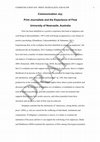
Positive communication in health and wellness, (Eds) M. Pitts and T.J. Socha, 2013
With all the gloomy predictions about the demise of print journalism, it is encouraging to discov... more With all the gloomy predictions about the demise of print journalism, it is encouraging to discover there are journalists who love what they do: there is positive motivation within print journalists’ work practices. By using data from ongoing ethnographic research investigating the creative practices of print journalists in Australia, the chapter will demonstrate that Mihaly Csikszentmihalyi’s (1997) concept of flow is experienced by journalists and it can be argued that it is flow, and the feeling it generates, that motivates journalists to produce creative work within the challenges of the domain of journalism.
Csikszentmihalyi’s early research into happiness set out to discover why people continued to pursue an activity when fame and money were not the prime motivation and he discovered it was because of the feeling of enjoyment that came from engaging with the activity (1997, p. 110). He called this feeling flow, or autotelic experience. Further research in this area led to the conclusion that flow occurs when the level of challenge of a task is equal to the level of skill. When flow is experienced, “there is the rush of well-being, of satisfaction that comes when the poem is completed or the theorem is proved” (Csikszentmihalyi, 1997, p. 123) or, in a journalistic context, the satisfaction in a well-written article. Csikszentmihalyi describes flow as:
"… a sense that one’s skills are adequate to cope with the challenges at hand, in a goal directed, rule-bound action system that provides clear clues as to how well one is performing. Concentration is so intense that there is no attention left over to think about anything irrelevant, or to worry about problems. Self-consciousness disappears, and the sense of time becomes distorted. An activity that produces such experiences is so gratifying that people are willing to do it for its own sake, with little concern for what they will get out of it, even when it is difficult, or dangerous” (Csikszentmihalyi, 1991 p. 71).
It would seem that the structures journalists work within, and the rules and procedures they must follow to produce their work, would stifle flow and the joy of communicating, which is, after all, the primary function of journalism. These structures include the rules of the domain of journalism and the organization worked for as well as the “criteria of selection, the preferences of the field” (Csikszentmihalyi, 1997, p. 47). However, it can be argued that learning and internalizing these very structures means they become intuitive or automatic and this enables a journalist to enter the state of flow and the feeling this generates provides the motivation to continue writing. By learning these structures, a journalist increases their skill level to meet the challenges of producing creative texts. A journalist writing in flow contributes to a positive communication experience for both the journalist and the audience.
The creative system in action: understanding cultural production and practice (Eds. Phillip McIntyre, Janet Fulton & Elizabeth Paton), Feb 20, 2016
This chapter answers the question: how do print journalists produce, or create, their work? Journ... more This chapter answers the question: how do print journalists produce, or create, their work? Journalism is seldom thought of as a creative form of writing, primarily because it is not an ‘artistic’ profession and some see it as constrained by rules and conventions, or structures, giving little licence for a journalist to exercise agency. In other words, it is thought that the existence of these structures leaves little room for print journalists to make creative choice. However, by applying the systems model of creativity suggested by Mihaly Csikszentmihalyi to print journalism, as this chapter does, it can be clearly seen that journalism is a creative activity in the same way as such writing genres as poetry and fiction writing.
Journal Articles by Janet M Fulton
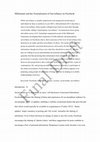
While surveillance is usually understood as the purposeful monitoring of individuals by those in ... more While surveillance is usually understood as the purposeful monitoring of individuals by those in authority (Lyon 2007), Albrechtslund (2013) describes a type of surveillance where people willingly keep watch on each other through social media, calling it 'participatory surveillance'. An anonymous focus group and online survey of 81 Australians categorised as part of the Millennial Generation investigated their experience of both authority and participatory surveillance on Facebook, that is, their awareness of the level of surveillance they themselves are under and their surveillance of others. The results reveal that this group are generally concerned about privacy and security for their personal information, though not always sure what they should do to ensure it, and that they are willing to access and distribute the personal information of others. They generally feel that protecting their information from individuals and from the government is a greater concern than ensuring privacy from commercial entities. However this group believe that a reduction in privacy, on and off line, is part of contemporary life, and giving up some information is necessary to participate in the online environment. Social media’s participatory surveillance appears to be preparing young people for a lifetime of being watched, by helping to re-define understandings of privacy.

For the lifestyle and a love of creativity: Australian journalism students’ motivations for becoming journalists
Media International Australia, May 2016
A number of studies have examined why students choose to study journalism at university, but over... more A number of studies have examined why students choose to study journalism at university, but overall, this area is still relatively underexplored. Yet, understanding why students choose journalism, and what career expectations they hold, is important not only for educators but also for wider society and public debates about the future of journalism and the value of tertiary journalism education. This article examines the motivations of 1884 Australian journalism students enrolled across 10 universities. It finds that hopes for a varied lifestyle and opportunities to express their creativity are the most dominant motivations among students. Public service ideals are somewhat less important, while financial concerns and fame are least important. These motivations also find expression in students’ preferred areas of specialisation (referred to in Australia as rounds): lifestyle rounds are far more popular than politics and business rounds or science and development rounds.
Detention attention: Framing a Manus Island riot
This article is reporting on a research project that investigated the framing of asylum seekers i... more This article is reporting on a research project that investigated the framing of asylum seekers in the Australian news publications The Austral- ian and The Guardian Australia Edition, during their coverage of a riot that occurred in an asylum seeker processing centre on Manus Island, Papua New Guinea, in February 2014. Analysis found themes of asylum seekers represented as threats to national identity, State sovereignty, and as victims. The research discusses the potential impacts framing may have on the way asylum seekers are perceived by readers of these publications. Its findings showed that the process of framing in news reports can both privilege and exclude aspects of an event being reported.
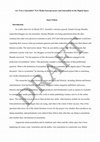
This article reports on findings from a research project that is examining alternative paths for ... more This article reports on findings from a research project that is examining alternative paths for media producers. The researcher has interviewed media producers in the digital space, including bloggers, online magazine producers, broadcasters and website producers, to discover what skills are required to work in a digital space, what business models are successful and what technologies are being employed. One of the questions asked of each of the respondents was “Do you consider what you are doing journalism?” Responses have shown that there is often a particular view of journalism and what it is and who can be called a journalist: those who have worked as journalists in traditional media still call themselves journalists while others who have come into the space via other professions are cautious about using the term. The article draws on the respondents’ comments from the research in an attempt to further understand how such definitions around journalism and journalist are informing media producers and their understanding of these terms in a splintering media epoch.

Australian journalism students’ professional views and news consumption: Results from a representative study
Australian Journalism Review, Jul 2015
Journalism education’s role in shaping students’ professional views has been a topic of interest ... more Journalism education’s role in shaping students’ professional views has been a topic of interest among scholars for the past decade in particular. Increasing numbers of studies are concerned with examining students’ backgrounds and views in order to identify what role exposure to the tertiary environment may play in socializing them into the industry. This study reports on the results of the largest survey of Australian journalism students undertaken to date, with a sample size of 1884 students. The study finds that time spent studying journalism appears to be related to changes in role perceptions and news consumption. Final-year students are significantly more likely to support journalism’s watchdog role and to reject consumer-oriented and ‘loyal’ roles. They also consume more news than first-year students. On the other hand, journalism education appears to have little impact on views of controversial practices, with only marginal differences between final- and first-year students.

Journalism education’s role in shaping students’ professional views has been a topic of interest ... more Journalism education’s role in shaping students’ professional views has been a topic of interest among scholars for the past decade in particular. Increasing numbers of studies are concerned with examining students’ backgrounds and views in order to identify what role exposure to the tertiary environment may play in socialising them into the industry.
This study reports on the results of the largest survey of Australian
journalism students undertaken to date, with a sample size of 1884
students. The study finds that time spent studying journalism appears
to be related to changes in role perceptions and news consumption.
Final-year students are significantly more likely to support journalism’s watchdog role and to reject consumer-oriented and “loyal” roles. They also consume more news than first-year students. On the other hand, journalism education appears to have little impact on views of controversial practices, with only marginal differences between final- and first-year students.
Mockros (1996) noted that a lack of senior staff in an organisation could mean mentoring was unav... more Mockros (1996) noted that a lack of senior staff in an organisation could mean mentoring was unavailable, hindering this valuable avenue for learning. Mockros’s comment is significant for journalism in Australia because of the number of job losses in the industry, including senior editorial staff. An important question arises from this reduction in senior staff: what will happen to mentoring in journalism? This article discusses findings from a research project that examined the creative practices of journalists and found that mentoring is an important way journalists learn how to do journalism and become journalists. It concludes that having fewer senior staff available for mentoring is an emerging problem that could affect journalism practice.
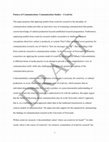
"This paper proposes that applying models from within creativity research to the discipline of co... more "This paper proposes that applying models from within creativity research to the discipline of communication will provide innovative ways of examining communication that pushes current knowledge of cultural production beyond established research programmes. At the University of Newcastle in Australia, researchers have been applying the systems model of creativity developed by Mihaly Csikszentmihalyi to different forms of media practice in an attempt to provide a more comprehensive view of communication.
Rather than focusing on either the producer or the receiver as the principal source of creativity, as other communication theories such as the transmission model and the cultural context model have done, this paper will demonstrate that the systems model of creativity allows both the producer and receiver to be examined as equal components within a creative system while also providing the contexts for creative production.
Csikszentmihalyi argued that creativity is the product of a system that includes three necessary, but not individually sufficient, elements: a domain of knowledge (the cultural context), an individual who understands and uses that knowledge to produce a novel change, and a field (the social context) that understands the domain and uses that knowledge to judge that the individual's contribution is novel and appropriate. All three elements, domain, individual and field, are equally important in producing a creative outcome.
The authors contend that the future of theorising about communication may lie in this confluence-based approach and demonstrate this contention by summarising the findings of creativity research in the communication studies discipline at the University of Newcastle."

Tilling the field in journalism education: implications of a systems model approach for journalism education
AJE Journal, May 2013
A 2007 UNESCO paper, Model curricula for journalism education, proposed subjects for journalism c... more A 2007 UNESCO paper, Model curricula for journalism education, proposed subjects for journalism courses. The model suggests educators include knowledge structures such as how to do journalism, how to act as a reflective journalist, the importance of journalism in society and several other theoretical ideas that should underpin journalism education. However, there are no suggestions about how to work within the social structure of journalism. This paper is proposing that as part of journalism education, it is important to include more than the knowledge structures. It is also crucial to teach students how to navigate the social structure of journalism.
This proposal arose out of doctoral research that investigated the creative practices of print journalists in Australia.
One finding of the research was how critical the social structure, or field, is to a journalist’s production process. In education, an equal emphasis on teaching an understanding of this social field will assist aspirant journalists to appreciate a range of aspects that are critical to their engagement but tend to remain under-emphasised in journalism education.
Continuing to teach the knowledge structures, including practical skills, of journalism is understood by the authors to remain a crucial part of education. But this paper argues that it is also of significant importance to increase journalism students’ knowledge of the field. A study has been proposed to analyse journalism education programmes offered in Australia to determine if other journalism programmes see this as important and to what degree – if any – journalism programmes incorporate education about the field.
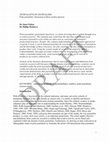
Journalism Practice, Jan 2013
Print journalism, particularly hard news, is a form of writing that is seldom thought of as a cre... more Print journalism, particularly hard news, is a form of writing that is seldom thought of as a creative practice. This situation may result from the idea that cultural and social structures journalists work within are often seen as constraints on journalists’ professional practices. Despite this common understanding, if a rationalist approach to creativity is used, it can be demonstrated that the structures of the practice of journalism, and the knowledge of these structures, not only constrains but also enables journalists to produce their work. Using the systems model of creativity developed by Mihaly Csikszentmihalyi, this paper provides evidence that by investigating print journalism within a rationalist framework, print journalists of any genre can be seen to be producers of creative cultural texts.
Analysis of the literature demonstrates that by marrying theories and definitions from creativity research with literature from the domain of print journalism, creativity can be identified within the print journalism domain. Analysis of semi-structured interviews conducted with print journalists in Australia and observation carried out in Australian newsrooms demonstrates that journalists are very aware of the devices used, and the requirements of the field, to produce texts in their professional practice that are novel and appropriate, or creative.

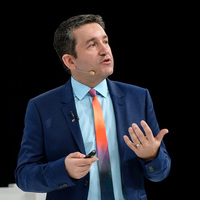





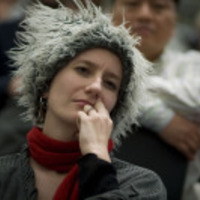



Uploads
Books by Janet M Fulton
The book asks a number of questions. What exactly is the fifth estate? What are the power structures that exist there? What is the relationship between the fourth and fifth estates? What do we lose and what do we gain in that transition? How does the fifth estate change various forms of communication? How does the fifth estate constitute new communities and social movements? What about traditional forms that are still finding their niche in the new world? What actions do we as communicators and communication scholars now need to engage with? Why is it important?
Creating Space in the Fifth Estate is accessible to scholars and students in a range of academic disciplines, including communication and media studies, sociology, cultural studies, and the arts. It will also appeal to those who work in the media and communication industries.
Chapters by Janet M Fulton
While surveillance usually has negative connotations of intrusion, control and privacy invasion, participatory surveillance can be seen as empowering rather than violating users. Mutual surveillance on Facebook is a social act which facilitates connections. An analysis of the discourse on the “People Sleeping at the University of Newcastle” page shows students choosing social cohesion over privacy by identifying themselves in anonymous photographs, responding to posted images with explanations and excuses for their on-campus naps, and sharing advice on the most comfortable sleeping spots and the most ennui-inducing courses and lecturers. Students offer themselves up for surveillance and in doing so establish a presence in the University community.
One of the primary uses of Facebook is for “social searching”: finding out more about the people met face to face or encountered in everyday life. This surveillance function allows users to profile the interests, actions and values of the communities into which they have been inducted on enrolment, and to situate themselves with in these communities. Establishing a connection with those caught napping on campus facilitates a sense of belonging to the University community.
Csikszentmihalyi’s early research into happiness set out to discover why people continued to pursue an activity when fame and money were not the prime motivation and he discovered it was because of the feeling of enjoyment that came from engaging with the activity (1997, p. 110). He called this feeling flow, or autotelic experience. Further research in this area led to the conclusion that flow occurs when the level of challenge of a task is equal to the level of skill. When flow is experienced, “there is the rush of well-being, of satisfaction that comes when the poem is completed or the theorem is proved” (Csikszentmihalyi, 1997, p. 123) or, in a journalistic context, the satisfaction in a well-written article. Csikszentmihalyi describes flow as:
"… a sense that one’s skills are adequate to cope with the challenges at hand, in a goal directed, rule-bound action system that provides clear clues as to how well one is performing. Concentration is so intense that there is no attention left over to think about anything irrelevant, or to worry about problems. Self-consciousness disappears, and the sense of time becomes distorted. An activity that produces such experiences is so gratifying that people are willing to do it for its own sake, with little concern for what they will get out of it, even when it is difficult, or dangerous” (Csikszentmihalyi, 1991 p. 71).
It would seem that the structures journalists work within, and the rules and procedures they must follow to produce their work, would stifle flow and the joy of communicating, which is, after all, the primary function of journalism. These structures include the rules of the domain of journalism and the organization worked for as well as the “criteria of selection, the preferences of the field” (Csikszentmihalyi, 1997, p. 47). However, it can be argued that learning and internalizing these very structures means they become intuitive or automatic and this enables a journalist to enter the state of flow and the feeling this generates provides the motivation to continue writing. By learning these structures, a journalist increases their skill level to meet the challenges of producing creative texts. A journalist writing in flow contributes to a positive communication experience for both the journalist and the audience.
Journal Articles by Janet M Fulton
This study reports on the results of the largest survey of Australian
journalism students undertaken to date, with a sample size of 1884
students. The study finds that time spent studying journalism appears
to be related to changes in role perceptions and news consumption.
Final-year students are significantly more likely to support journalism’s watchdog role and to reject consumer-oriented and “loyal” roles. They also consume more news than first-year students. On the other hand, journalism education appears to have little impact on views of controversial practices, with only marginal differences between final- and first-year students.
Rather than focusing on either the producer or the receiver as the principal source of creativity, as other communication theories such as the transmission model and the cultural context model have done, this paper will demonstrate that the systems model of creativity allows both the producer and receiver to be examined as equal components within a creative system while also providing the contexts for creative production.
Csikszentmihalyi argued that creativity is the product of a system that includes three necessary, but not individually sufficient, elements: a domain of knowledge (the cultural context), an individual who understands and uses that knowledge to produce a novel change, and a field (the social context) that understands the domain and uses that knowledge to judge that the individual's contribution is novel and appropriate. All three elements, domain, individual and field, are equally important in producing a creative outcome.
The authors contend that the future of theorising about communication may lie in this confluence-based approach and demonstrate this contention by summarising the findings of creativity research in the communication studies discipline at the University of Newcastle."
This proposal arose out of doctoral research that investigated the creative practices of print journalists in Australia.
One finding of the research was how critical the social structure, or field, is to a journalist’s production process. In education, an equal emphasis on teaching an understanding of this social field will assist aspirant journalists to appreciate a range of aspects that are critical to their engagement but tend to remain under-emphasised in journalism education.
Continuing to teach the knowledge structures, including practical skills, of journalism is understood by the authors to remain a crucial part of education. But this paper argues that it is also of significant importance to increase journalism students’ knowledge of the field. A study has been proposed to analyse journalism education programmes offered in Australia to determine if other journalism programmes see this as important and to what degree – if any – journalism programmes incorporate education about the field.
Analysis of the literature demonstrates that by marrying theories and definitions from creativity research with literature from the domain of print journalism, creativity can be identified within the print journalism domain. Analysis of semi-structured interviews conducted with print journalists in Australia and observation carried out in Australian newsrooms demonstrates that journalists are very aware of the devices used, and the requirements of the field, to produce texts in their professional practice that are novel and appropriate, or creative.
The book asks a number of questions. What exactly is the fifth estate? What are the power structures that exist there? What is the relationship between the fourth and fifth estates? What do we lose and what do we gain in that transition? How does the fifth estate change various forms of communication? How does the fifth estate constitute new communities and social movements? What about traditional forms that are still finding their niche in the new world? What actions do we as communicators and communication scholars now need to engage with? Why is it important?
Creating Space in the Fifth Estate is accessible to scholars and students in a range of academic disciplines, including communication and media studies, sociology, cultural studies, and the arts. It will also appeal to those who work in the media and communication industries.
While surveillance usually has negative connotations of intrusion, control and privacy invasion, participatory surveillance can be seen as empowering rather than violating users. Mutual surveillance on Facebook is a social act which facilitates connections. An analysis of the discourse on the “People Sleeping at the University of Newcastle” page shows students choosing social cohesion over privacy by identifying themselves in anonymous photographs, responding to posted images with explanations and excuses for their on-campus naps, and sharing advice on the most comfortable sleeping spots and the most ennui-inducing courses and lecturers. Students offer themselves up for surveillance and in doing so establish a presence in the University community.
One of the primary uses of Facebook is for “social searching”: finding out more about the people met face to face or encountered in everyday life. This surveillance function allows users to profile the interests, actions and values of the communities into which they have been inducted on enrolment, and to situate themselves with in these communities. Establishing a connection with those caught napping on campus facilitates a sense of belonging to the University community.
Csikszentmihalyi’s early research into happiness set out to discover why people continued to pursue an activity when fame and money were not the prime motivation and he discovered it was because of the feeling of enjoyment that came from engaging with the activity (1997, p. 110). He called this feeling flow, or autotelic experience. Further research in this area led to the conclusion that flow occurs when the level of challenge of a task is equal to the level of skill. When flow is experienced, “there is the rush of well-being, of satisfaction that comes when the poem is completed or the theorem is proved” (Csikszentmihalyi, 1997, p. 123) or, in a journalistic context, the satisfaction in a well-written article. Csikszentmihalyi describes flow as:
"… a sense that one’s skills are adequate to cope with the challenges at hand, in a goal directed, rule-bound action system that provides clear clues as to how well one is performing. Concentration is so intense that there is no attention left over to think about anything irrelevant, or to worry about problems. Self-consciousness disappears, and the sense of time becomes distorted. An activity that produces such experiences is so gratifying that people are willing to do it for its own sake, with little concern for what they will get out of it, even when it is difficult, or dangerous” (Csikszentmihalyi, 1991 p. 71).
It would seem that the structures journalists work within, and the rules and procedures they must follow to produce their work, would stifle flow and the joy of communicating, which is, after all, the primary function of journalism. These structures include the rules of the domain of journalism and the organization worked for as well as the “criteria of selection, the preferences of the field” (Csikszentmihalyi, 1997, p. 47). However, it can be argued that learning and internalizing these very structures means they become intuitive or automatic and this enables a journalist to enter the state of flow and the feeling this generates provides the motivation to continue writing. By learning these structures, a journalist increases their skill level to meet the challenges of producing creative texts. A journalist writing in flow contributes to a positive communication experience for both the journalist and the audience.
This study reports on the results of the largest survey of Australian
journalism students undertaken to date, with a sample size of 1884
students. The study finds that time spent studying journalism appears
to be related to changes in role perceptions and news consumption.
Final-year students are significantly more likely to support journalism’s watchdog role and to reject consumer-oriented and “loyal” roles. They also consume more news than first-year students. On the other hand, journalism education appears to have little impact on views of controversial practices, with only marginal differences between final- and first-year students.
Rather than focusing on either the producer or the receiver as the principal source of creativity, as other communication theories such as the transmission model and the cultural context model have done, this paper will demonstrate that the systems model of creativity allows both the producer and receiver to be examined as equal components within a creative system while also providing the contexts for creative production.
Csikszentmihalyi argued that creativity is the product of a system that includes three necessary, but not individually sufficient, elements: a domain of knowledge (the cultural context), an individual who understands and uses that knowledge to produce a novel change, and a field (the social context) that understands the domain and uses that knowledge to judge that the individual's contribution is novel and appropriate. All three elements, domain, individual and field, are equally important in producing a creative outcome.
The authors contend that the future of theorising about communication may lie in this confluence-based approach and demonstrate this contention by summarising the findings of creativity research in the communication studies discipline at the University of Newcastle."
This proposal arose out of doctoral research that investigated the creative practices of print journalists in Australia.
One finding of the research was how critical the social structure, or field, is to a journalist’s production process. In education, an equal emphasis on teaching an understanding of this social field will assist aspirant journalists to appreciate a range of aspects that are critical to their engagement but tend to remain under-emphasised in journalism education.
Continuing to teach the knowledge structures, including practical skills, of journalism is understood by the authors to remain a crucial part of education. But this paper argues that it is also of significant importance to increase journalism students’ knowledge of the field. A study has been proposed to analyse journalism education programmes offered in Australia to determine if other journalism programmes see this as important and to what degree – if any – journalism programmes incorporate education about the field.
Analysis of the literature demonstrates that by marrying theories and definitions from creativity research with literature from the domain of print journalism, creativity can be identified within the print journalism domain. Analysis of semi-structured interviews conducted with print journalists in Australia and observation carried out in Australian newsrooms demonstrates that journalists are very aware of the devices used, and the requirements of the field, to produce texts in their professional practice that are novel and appropriate, or creative.
This paper is generated from the results of an ongoing project that is investigating how print journalists in Australia produce their work. Csikszentmihalyi suggests that creativity is systemic and can be found in the confluence of three elements: a structured body of knowledge (domain), a social system that understands the domain (field) and an individual. These three elements make up his systems model of creativity and each are equally important for a creative outcome. The project is applying Csikszentmihalyi’s systems model to print journalism to examine how cultural, social and individual influences affect how print journalists produce, or create, their work.
Data analysis of semi-structured interviews conducted with journalists and editors has indicated that, as per Csikszentmihalyi’s proposal, the field is a crucial element in the creative production of news texts. This paper is testing out the notion of creativity in print journalists’ everyday news practices and aims to demonstrate how the field supports these practices.
However, by using a Rationalist framework, it can be argued that creative activity in print journalism is not only possible but plausible. By using Mihaly Csikszentmihalyi’s systems model of creativity to examine the creative practices of print journalists, this paper argues it is the structures a journalist works within that enables production and it is by their agency that journalists can produce creative media texts.
Interestingly, a literature review has revealed that creative and creativity are frequently used within journalism’s literature but the terms are rarely defined. Therefore, this paper presents rational arguments for how a print journalist is a creative producer of media texts as well as providing a definition for creativity in a journalistic context.
This paper is reporting on how the respondents in the research project view credibility and how they build, or have built, that trust with the audience. Analysis of the data gathered via interviews and analysis of online sites has shown that there are three ways to build credibility with an audience: authenticity, engagement and interactivity with the audience, and transparency. The paper will discuss credibility and its relationship with these three themes, how these practitioners understand the need to balance the competing priorities of making money and producing credible content, and how they maintain this credibility by having an intimate understanding of their audience.
Media producers in the West have been faced with changes in the way content is produced and consumed with changes in technology, digitisation of content, and convergence each playing a part in a transforming media landscape. However, with these new technologies, different opportunities have opened up for media content producers, and there is an urgent need for empirical evidence on these new media professionals and how they work and survive in the digital media landscape. We know, anecdotally, that these new media professionals exist, and research in New Zealand has shown that bloggers are becoming increasingly active in the media domain and have “started to fill the gap in public interest journalism left by the commercially operated media corporates” (Myllylahti, 2013, p. 42). But as yet, there is little empirical data at the moment that demonstrates the Australian experience.
Employment woes for journalists in Western media in traditional media forms have been well documented (Fulton & Balnaves, 2013). However, according to research by Economic and Market Development Advisors (EMDA), media jobs in Australia increased in 2012. The EMDA report noted a decrease in traditional employment with an increase in employment in media such as websites, online magazines and other Web 2.0 forms. The aim of this research is to examine workers in this Web 2.0 area. The Web 2.0 environment has enabled people outside the mainstream media to engage with an audience, and provide media, via platforms such as blogs, microblogs, social networking sites and websites.
Because of the radical changes to journalism over the last decade and the different way it is now produced and delivered, and the rise of alternative sources of information, it is even more crucial to examine the newer styles of journalism and this examination will be done in this research by examining the producers themselves using ethnographic techniques such as semi-structured interviewing. This paper will report on the project and its importance including a review of literature in the area.
BIBLIOGRAPHY
Fulton, J.M. & Balnaves, M., 2013, Australia and changes in Western media, paper presented at Australian and New Zealand Communication Association Conference 2013, Murdoch University, Perth, Australia, 3-5 July, 2013.
Myllylahti, M., 2013, JMAD New Zealand Media Ownership Report 2013, Centre for Journalism, Media and Democracy (JMAD), AUT University, New Zealand, http://www.aut.ac.nz/__data/assets/pdf_file/0007/426067/JMAD-2013-Final.pdf - accessed 30.11.13.
Richard Maisel wrote the above in 1973 after reviewing media growth trends from 1950-1970 and, while the Internet has certainly exacerbated change in mass media, Maisel’s research demonstrates that the decline has been going on for a long time. Employment woes for journalists in the Western media in media forms such as newspapers have been well documented but what hasn’t been discussed in detail is the state of employment in other areas of the media such as public relations, filmmaking, online occupations and music. This paper looks briefly at the state of media work in the West, including different forms of journalism but also other areas of media production, and discusses the Australian media industry within this context.
Over the last twenty years, media workers in the West have been faced with changes in the way content is produced and consumed. Changes in technology, digitisation of content and convergence have each played a part in a transforming media landscape. Skills that are required to work in different jobs in the media have blurred with reporters now expected, in many organisations, to be the reporter/photographer/web content curator while other cultural producers, such as musicians, have the technology and knowhow to produce using personal software and equipment. Traditional media organisations are competing for advertising dollars with non-media companies such as Google and Facebook. These companies’ business model includes selling its users’ data to advertisers, which means they can target key demographics with much more precision than television, radio and newspapers. As an example, in the US, advertising on Google has grown steadily since 2004 in comparison to advertising in print media.
An increase in requests for user-generated content by mainstream media organisations has also meant media producers are less likely to actively seek out stories, which has led to a change in work practices. Stuart Allan describes how the role of the professional cameraman, for example, has changed:
Never before has there been a major international story where television news crews have been so emphatically trounced in their coverage by amateurs wielding their own cameras,” observed on British newspaper. “Producers and professional news cameramen often found themselves being sent not the the scenes of disaster to capture footage of its aftermath, but to the airports where holiday-makers were returning home with footage of the catastrophe as it happened (The Independent, January 3, 2005 in Allan, 2009).
Allan (2009) notes that the first instances of citizen journalism were user-generated content from the South Asian tsunami in 2004 and since then mainstream media has actively encouraged audience engagement in the news process. The audience is asked for stories, breaking news, images, and audio and video footage, leading to the argument that news producers are becoming curators rather than generators of the news (Bruno, 2011; Newman, 2010). Journalists regularly scour social media sites such as Twitter, Facebook and YouTube and, increasingly, Pinterest, to discover the latest water-cooler trend.
Audiences have a wide amount of choice in the media they consume but they also have the ability to produce their own ‘media’ with innovative home equipment such as smartphones and their myriad of apps, blogging and photo software, and social media sites such as Twitter, Facebook and Tumblr giving ordinary citizens the ability to produce information for consumption. And when audiences do engage with mainstream media they expect a high level of interaction, thus news articles and blogs have comment functionality, news organisations produce social media pages, musicians, filmmakers and public relations firms use YouTube as a dissemination tool, photographers use Facebook, etc.
While employment in other areas of media production, such as filmmaking and music, has always been precarious, digitisation and changes in distribution has meant many jobs in these areas, and other areas of media production, are simply disappearing. On the other hand, there are areas where employment is increasing, and quickly. Jobs in web design, production, social media and public relations are booming in the West with New York Times journalist David Barstow declaring: “The muscles of journalism are weakening and the muscles of public relations are bulking up—as if they were on steroids” (in Sullivan, 2011).
The authors in this paper contextualise these major changes in the context of recent developments in the Australian media industry.
Bibliography
Allan, S., 2009, ‘Histories of citizen journalism’, in Allan, S. & Thorsen, E. (eds), Citizen journalism: global perspectives, Peter Lang Publishing, New York.
Bruno, N., 2011, Tweet First, Verify Later: How Real-Time
Information is Changing the Coverage of Worldwide Crisis Events, paper for
the Reuters Institute for the Study of Journalism, University of Oxford, Oxford, http://reutersinstitute.politics.ox.ac.uk/fileadmin/documents/Publications/fellows__papers/2010-2011/TWEET_FIRST_VERIFY_LATER.pdf
Maisel, R., 1973, ‘The decline of mass media’ in Public Opinion Quarterly, 37(2): pp. 159-170.
Newman, N., 2010, Journalism and Technology Predictions 2011, The
Media Briefing, http://www.themediabriefing.com/resource/media-marketjournalism-
and-technology-predictions-2011-by-nic-newman
Sullivan, J., 2011, True enough: the second age or PR, Columbia Journalism Review, http://www.cjr.org/feature/true_enough.php?page=all.
Using data from a doctoral research project that examined the creative practices of print journalists in Australia, this paper will demonstrate how journalists interact with their audience throughout the work process from story generation to research, writing, publishing and feedback. The discussion about print journalists and their audience demonstrates how the audience is important in a journalist’s creative process regardless of the platform they write for.
What this paper will also show is that the audience is a structure that both enables and constrains journalists in their creative process. Furthermore, writing for an audience becomes part of a journalist’s tacit knowledge (Schön, 1983), thus making the creative process easier. "
Cole's observation illustrates that the perception of the print journalism industry has changed very little on a fundamental level over the last forty years – these observations could very well describe the digital environment journalists now work in. Keeping this in mind, one can ask how has digital technology affected the way print journalists produce their work in comparison to writing for the ‘traditional’ Press?
Preliminary findings from an ethnographic study into the creative practices of the print journalist indicate that the use of digital technology has had both a positive and negative effect. This paper discusses how news practitioners believe that this technology – the computer and computer programs, the Internet, email, mobile phones, and digital cameras – has enhanced their production practices but also created new challenges.
However, it is important to recognise that rather than simply focusing on technology there are many factors that dictate changes in work practices and the research has revealed that the elements of good journalism are still regarded as important when writing in a digital environment.
This proposal arose out of doctoral research that investigated the creative practices of print journalists in Australia. One finding of the research was how critical the social structure, or field, is to a journalist’s production process. The field of print journalism includes, for example, editors, sub-editors, other journalists, owners, the audience and educators. In education, an equal emphasis on teaching an understanding of the field – how the field works, who can assist in accessing information, who selects what is published, who selects what is to be written, as well as identifying who in the field can negotiate entry into journalism – will assist aspirant journalists to appreciate a range of aspects that are critical to their engagement but tend to remain under-emphasised in journalism education.
There remains a well-established and ongoing pedagogical tension between university-based journalism educators and the journalism industry (Hirst, 2010), with Ricketson (2001) noting that much of this tension centres around perceptions of an oppositional polarity occurring between theory and practice. While the focus in such debate centres around the differences between pedagogical approaches that are “doing” journalism and those that are “about” journalism, some of the debate emerging from industry involves argument about the credibility and worth of courses, programs and journalism educators. Many media outlets demand students who are “work-ready” and many students place high importance and value on practical skills. Continuing to teach the knowledge structures, including practical skills, of journalism is understood by the authors to remain a crucial part of education. But this presentation argues that it is also of significant importance to increase journalism students’ knowledge of the field. A study has been proposed to analyse journalism education programs offered in Australia to determine if other journalism programs see this as important and to what degree – if any – journalism programs incorporate education about the field. This presentation uses data from a PhD dissertation to demonstrate the importance of the field in journalists’ work processes but also provides information on the proposed study.
By using the systems model to examine the creative practices of print journalists, this thesis aims to demonstrate that the structures a journalist interacts with not only constrain but also enable production and it is through their agency, or ability to choose the possibilities within these structures, that journalists produce creative media texts. Rather than a view of creativity that focuses on the individual as the primary producer of a creative contribution, or conversely a largely deterministic view, where an individual is constrained or determined by the structures they work within, this thesis is arguing that print journalists and the structures they work within interact with each other.
The ethnographic research was conducted using a triangulated set of methods. Interviews were conducted with thirty-six journalists and editors who work in the Australian print media industry. Observation of three newsrooms was also undertaken. Document and artefact analysis was used as the third method and analysis of the data obtained from these methods, as well as an examination of creativity and journalism literature, shows that there is a link between the cultural structure, the social structure and the individual print journalist in the creation of a media text, illustrating the veracity of the systems model of creativity in action.
However, if a rationalist approach is used, it can be demonstrated that it is these very structures, and the knowledge of these structures, that actually enable a journalist to produce their work. By using Csikszentmihalyi’s systems model of creativity, a rationalist approach, as the principal theory, this paper provides evidence that by investigating print journalism within a rationalist framework, a print journalist can be seen as a producer of creative cultural texts. Furthermore, by acknowledging that different genres of print journalism have different structures, it can also be argued that a journalist working in any genre has the capacity to produce creative texts.
This paper is part of a wider qualitative study into the creative practices of the print journalist in Australia that is examining the individual journalist’s production within cultural and social contexts. Analysis of the literature has demonstrated that by marrying theories and definitions from the creativity research domain with literature from the print journalism domain, creativity can be found and explained within the print journalism domain. Furthermore data analysis of semi-structured interviews conducted with print journalists in Australia demonstrated that they are very aware of the devices used, and the requirements of the field, to produce texts that are both novel and appropriate: a creative text.